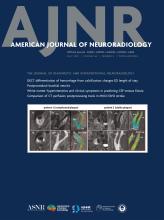This article requires a subscription to view the full text. If you have a subscription you may use the login form below to view the article. Access to this article can also be purchased.
SUMMARY:
The World Health Organization Classification of Tumors of the Central Nervous System, 5th edition (WHO CNS5) significantly revised the terminology and diagnostic criteria of “mesenchymal nonmeningothelial” tumors of CNS to better align with the classification of these soft tissue tumors outside the CNS. The CNS chapter only covers the entities with distinct histologic or molecular characteristics that occur exclusively or primarily in the CNS. These tumors usually arise from the meninges and are rarely intraparenchymal in origin, mainly in the supratentorial compartment. These tumors are grouped into 3 main categories: soft tissue, chondro-osseous, and notochordal. Soft tissue tumors, the largest group, are further divided into fibroblastic, vascular, and skeletal muscle subtypes. Notably, a new subcategory for “tumors of uncertain differentiation” has been introduced, encompassing 3 new histomolecular entities: FET::cAMP response element-binding protein (CREB) fusion-positive, Capicua transcriptional receptor (CIC)-rearranged sarcoma, and primary intracranial sarcoma, DICER1-mutant. Emerging entities like dural angioleiomyomas and spindle cell neoplasms with neurotrophic receptor kinase (NTRK) rearrangements have been reviewed, although not introduced in WHO CNS5. Given the often nonspecific histology and immunophenotype of mesenchymal nonmeningothelial tumors of uncertain differentiation, molecular techniques have become indispensable for accurate diagnosis. This review provides a comprehensive overview of primary mesenchymal nonmeningothelial CNS tumors, including their clinical, radiologic, histopathologic, and molecular characteristics and treatment strategies.
ABBREVIATIONS:
- 18F-FCH
- 18F-fluorocholine
- ATF1
- activating transcription factor-1
- CCMs
- cerebral cavernous malformation
- CIC
- Capicua transcriptional receptor
- CM
- cavernous malformation
- CREB
- cAMP response element-binding protein
- DCS
- DICER1-mutant sarcoma
- EWSR1
- Ewing sarcoma RNA-binding protein
- FUS
- fused in sarcoma
- GFAP
- Glial Fibrillary Acidic Protein
- MAP
- Mitogen-Activated Protein Kinase
- MPNST
- malignant peripheral nerve sheath tumor
- NAB2
- nerve growth factor-inducible protein A binding protein 2
- NTRK
- neurotrophic receptor kinase
- SFT
- solitary fibrous tumor
- STAT6
- signal transducer and activator of transcription 6
- WHO CNS5
- World Health Organization Classification of Tumors of the Central Nervous System, 5th edition
- © 2025 by American Journal of Neuroradiology












